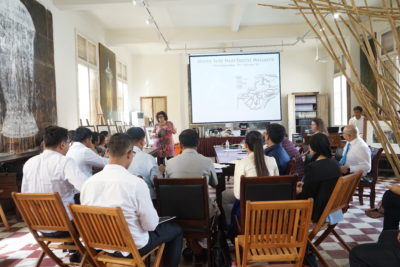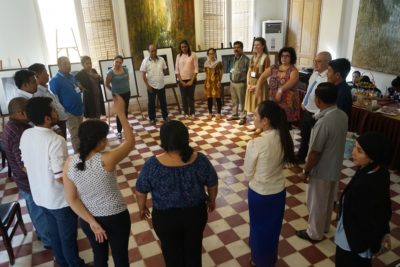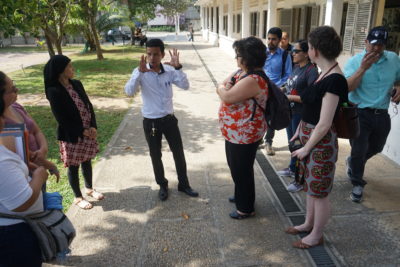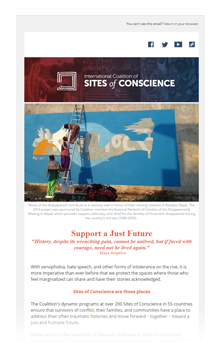
Elena Monicelli is a Coordinator at the Peace School of Monte Sole, a pioneering Site of Conscience in and around the mountaintops of Marzabotto, Italy, where in one short week in 1944, 800 people – mostly women and children – were killed by Nazi SS troops. The Peace School of Monte Sole uses the area as a basis for educational programs and youth camps, where children from countries currently in conflict – be they Palestinians and Israelis or Serbs and Kosovo-Albanians – are brought together in a peaceful setting to learn the importance of dialogue and mutual respect.
In January 2018, Monicelli traveled to Cambodia to participate in an educators’ workshop, sponsored by the Coalition’s Global Initiative for Justice, Truth and Reconciliation, that gathered educators from Cambodia, Timor Leste, Guatemala and Italy to share best practices and lessons learned from memorialization-based approaches in education programs about mass atrocity. Below are her reflections.

“It seems obvious, but you really realize how much you are shaped by your own frames and contexts only when you are put in front of the mirror of another’s experience. At the educators’ workshop in Phnom Penh, I learned about the violence carried out by the very long civil war in Guatemala (1960-1996), the oppression of the Indonesian government against Timor Leste at the end of a long period of systematic human rights violations (1975-1999), and, above all, the Khmer Rouge’s terroristic regime in Cambodia (1975-1979), as well as their heritage of social division, poverty and pain. These struggles had been familiar to me in a vague way before arriving in Cambodia, but hearing about them in person, in a new setting, presented me with a series of questions that was new to me, that had not been presented in that way before – at the exact moment in which I was being called on to train others in using history and memory as tools to prevent violence.
I had never felt the huge burden of European (not to say Western) history as I did at this workshop. That history – the Shoah and the massacres of civilians specifically – is often processed as a ‘post-memory’ now, as something that we can comfortably reflect on given the time that has passed. More than 70 years after the end of WWII, the usual narrative is the one representing a reconciled Europe, in which conflict doesn’t arise anymore – unless from the outside. We, as Europeans, have lost the substance of that tragedy; the bones, flesh and blood. On the one hand this allows us to have some long-term insight and perspective on the events, but on the other, it offers us false reassurance – a sense that we have ‘moved on’ from such brutality – which ultimately keeps us detached from the true human suffering of those who live and – above all – die beside us.
While there is no denying the power of reading the testimony of a massacre witness or an extermination camp survivor, listening to the accounts of more recent massacres – of a woman who had been repeatedly raped and deprived of her child after delivery, and who now fears her story will be lost – was, for me, beyond powerful.
At the same time, that impact is not guaranteed. Indeed, in Europe, I worry that the ‘mountain of memory’ we are so proud of is in fact just one of the ways that we relinquish our responsibilities to address more recent and ongoing human rights abuses.

It was a grey January morning and I was walking extremely slowly through Tuol Sleng, a former high school used as a center of torture and detention by the Khmer Rouge. By chance, I realized that beside me were two Italian tourists. They were looking at the same brick cells as me, but talking about ‘the invasion,’ about the unbearable number of strangers who are crowding their city in Italy and above all about the fact that ‘they who are coming might be desperate, but they are in fact dirty thieves bringing diseases and moral decline.’ My fellow citizens seemed unaware of how their statements, their prejudices, sounded in that very site. ‘It would be necessary,’ they continued, ‘to put all of them in jail and throw away the key.’ I wanted to scream at that moment, cry even, maybe even throw a punch at the wall. But I had no strength for that. I walked out, sat on a bench in the garden, and confronted the hard fact that memory, if made just of duty and tourism, will not stop human beings from inflicting horror and pain on their brothers and sisters. I came home, to Monte Sole, with even more will and desire to work.”

